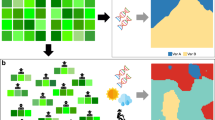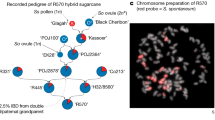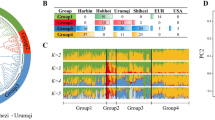Abstract
It is shown that, in breeding a clonal crop for several diverse environments, it is probably best to select populations in those environments and exchange clonal material extensively at an early stage. An example is drawn from sugarcane. There is evidence in this crop that selection is rather inefficient and that superior genotypes may occur at higher frequencies than would usually be thought likely.
Similar content being viewed by others
Article PDF
References
Finney, D J. 1958. Plant selection for yield improvement. Euphytica, 7, 83–106.
MacColl, D. 1977. Growth and sugar accumulation in sugarcane III. ExplAgric, 13, 161–167.
Meyer, H K, Heinz, D J, and Wu, K K. 1982. Visual selection II. Hawaiian Sug Pltrs Ass ann Rep, 1982, 8–9.
Walker, D I T, and Simmonds, N W. 1984. Sugarcane breeding. In: Sugarcane, Blackburn, F. H., Longman, London.
Young Kong, V M. 1973. Comparison of the efficiency of three methods of selection in a mixed seedling population. Proc West Ind Sug Cane Technol, Barbados, 1973, 176–181.
Author information
Authors and Affiliations
Rights and permissions
About this article
Cite this article
Simmonds, N. A note on the strategy of breeding clonal crops. Heredity 53, 397–401 (1984). https://doi.org/10.1038/hdy.1984.96
Received:
Issue date:
DOI: https://doi.org/10.1038/hdy.1984.96



